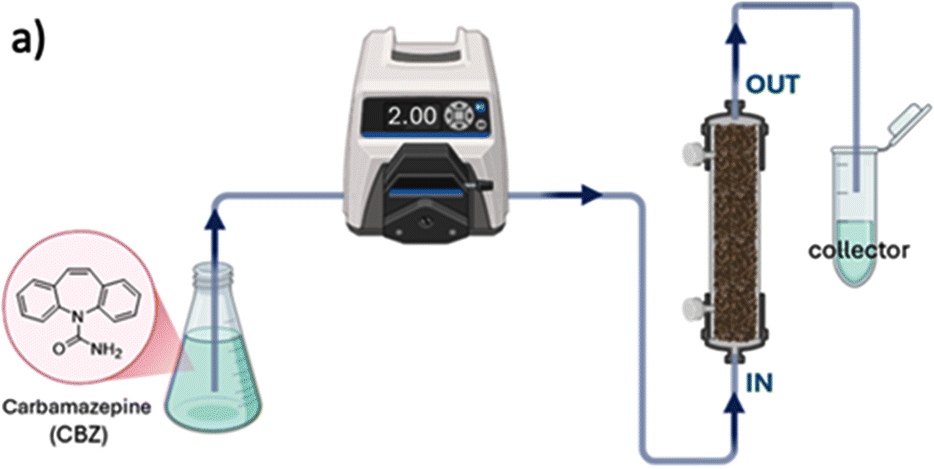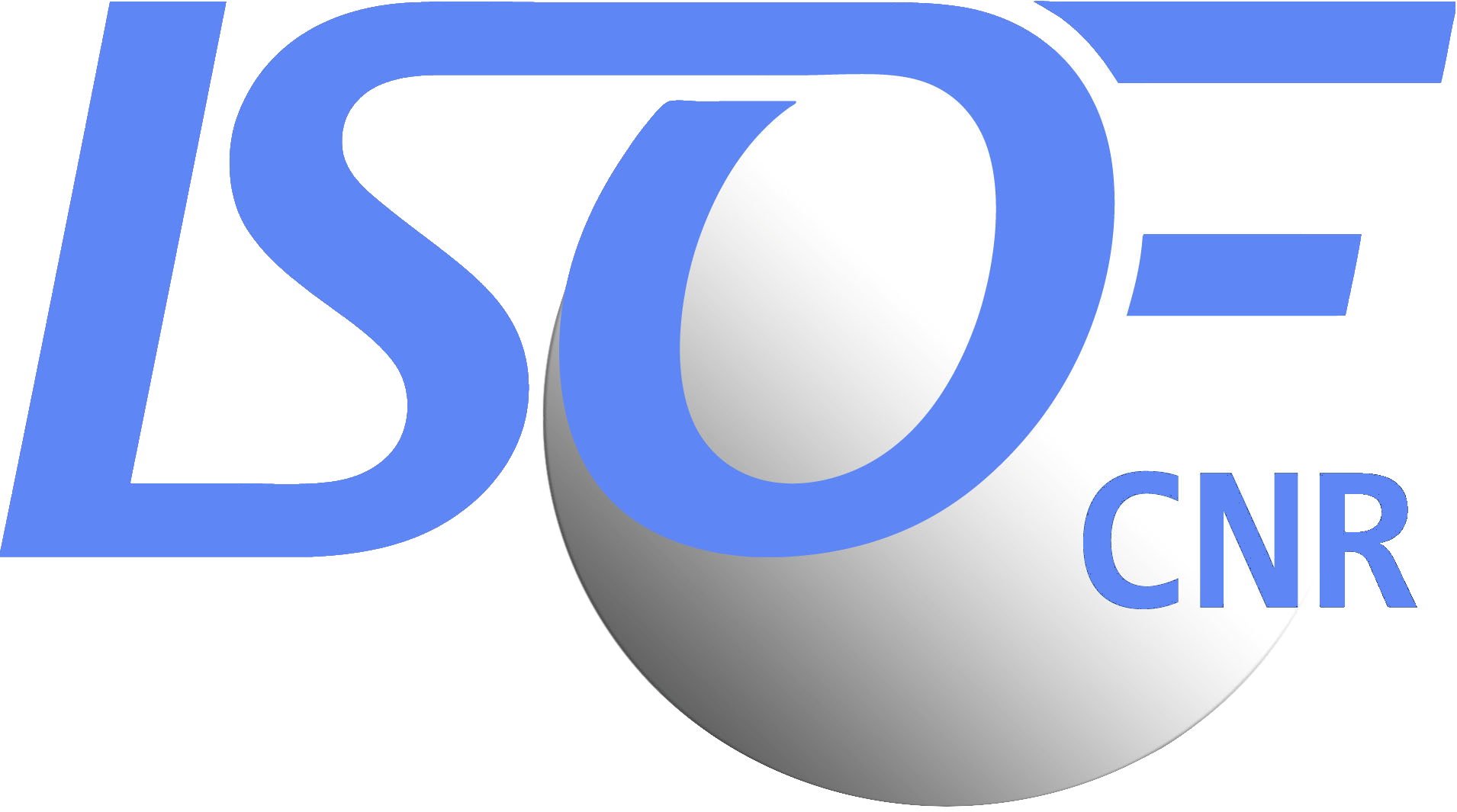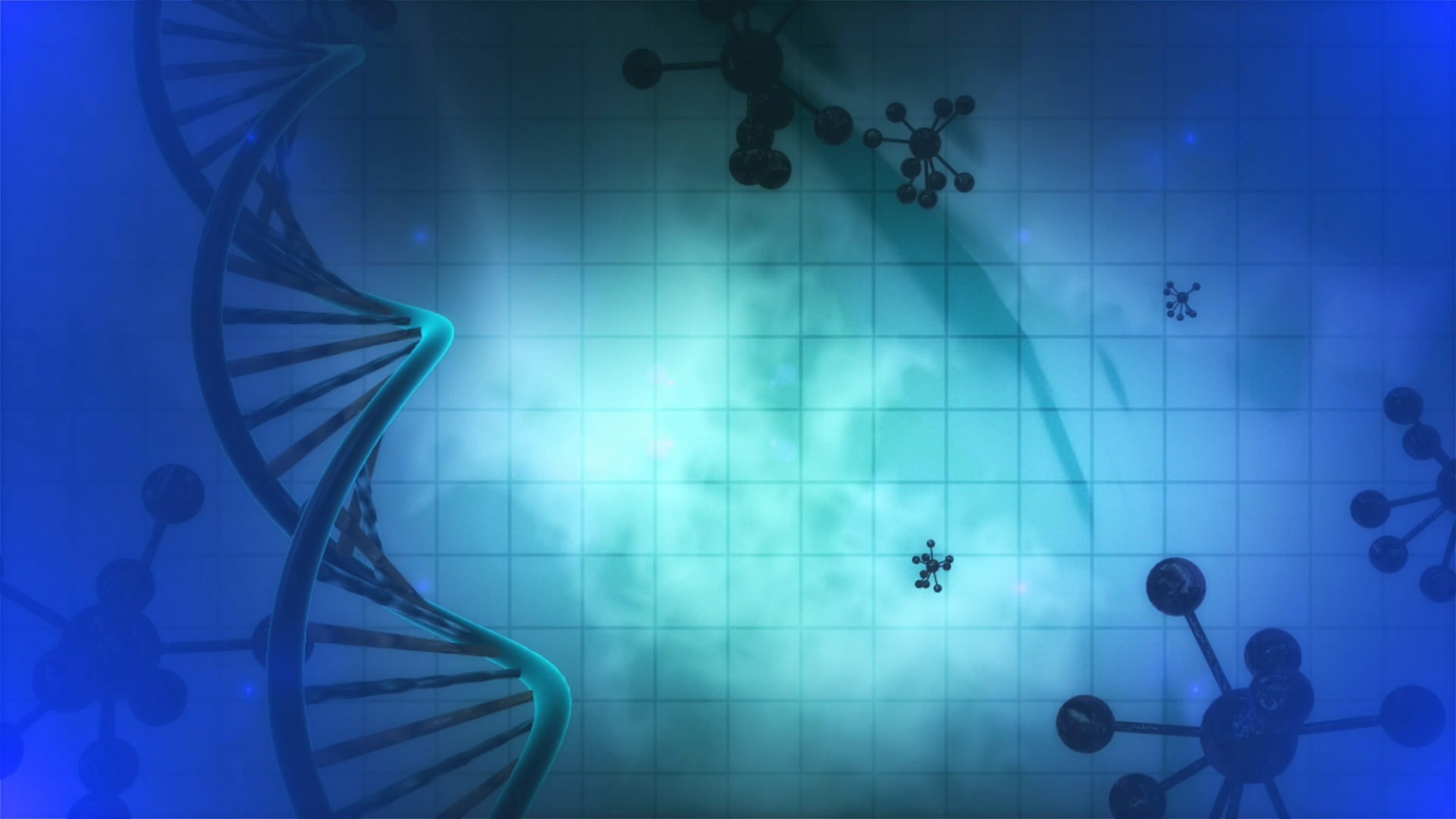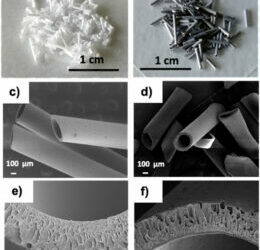Plastic debris is one of the most widespread pollutants in our oceans, sometimes even forming floating islands. But what if this pollutant could become part of the solution?
Researchers at ISOF have discovered a way to transform plastic waste into a powerful tool for cleaning water. Using industrial by-products from a company that produces polysulfone–graphene oxide (PSU-GO) membranes, they developed a new material designed to filter pollutants from water.
The process is simple yet effective: plastic waste granules are placed into cartridges and chemically modified with L-lysine, a common amino acid, which alters their surface properties. The resulting material, called PSU-GOLys, was then tested for its ability to remove carbamazepine—a drug widely used to treat epilepsy and neuropathic pain—that is increasingly found as a contaminant in water supplies.
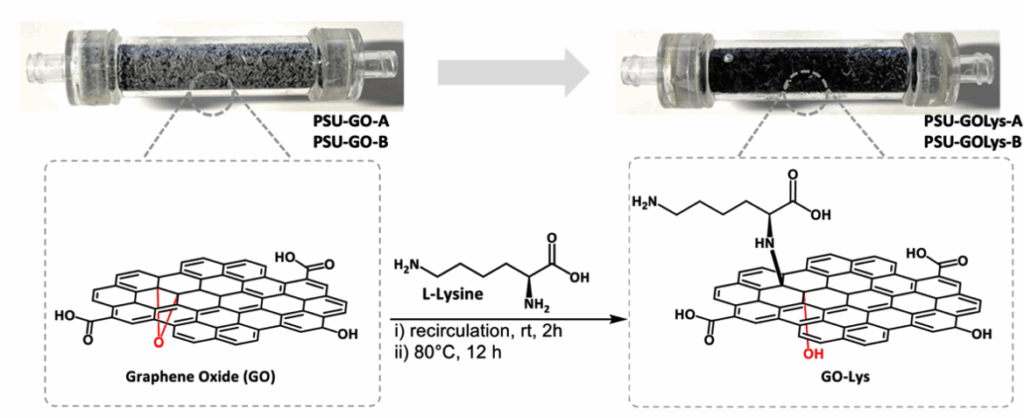
The results were remarkable: PSU-GOLys removed four times more carbamazepine from water than untreated plastic waste. This breakthrough demonstrates a powerful example of upcycling—converting low-value waste into high-performance, high-value products. Even better, the approach is scalable and cost-effective, allowing existing water treatment processes to be improved without overhauling current manufacturing methods.

This work was first published in RSC Applied Interfaces, a high-impact journal from the Royal Society of Chemistry. The study has also been selected for inclusion in the themed collection “Sustainable Development Goal 12: Responsible Production and Consumption”, highlighting its relevance to global sustainability efforts.
You can read the full article for free here:
Functionalizing graphene oxide in polysulfone composite adsorption cartridges through in-flow, in situ treatment
RSC Appl. Interfaces, 2025, 2, 917–921
Included in RSC Themed collection:
Sustainable Development Goal 12: Responsible Production and Consumption.
